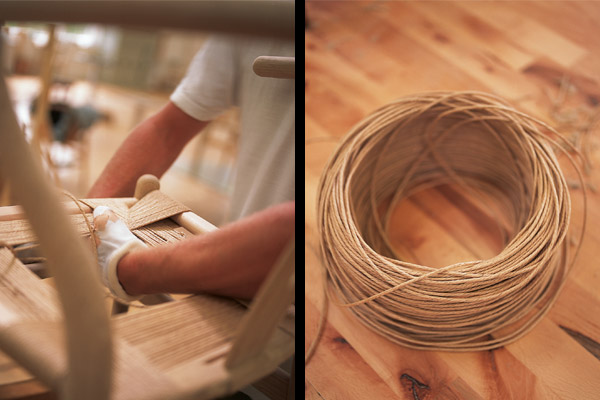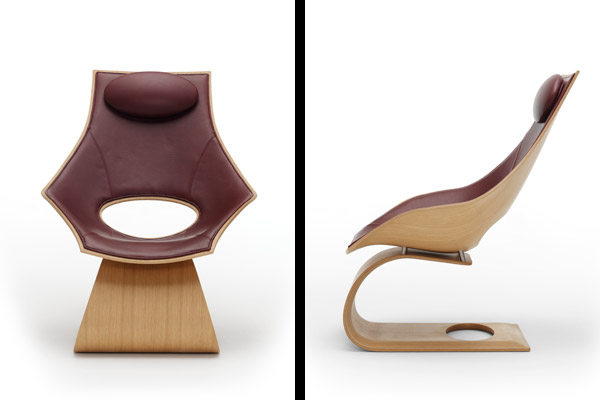Sustainability, high quality craftsmanship and an adherence to traditional values define the furniture of Danish company Carl Hansen & Søn. Iliyas Ong finds out more from its third-generation owner and CEO, Knud Erik Hansen.

August 28th, 2014
Like fine wine, terroir determines the quality of a piece of furniture from Carl Hansen & Søn. The family-run Danish furniture company exclusively uses wood from Denmark, which is made stronger by the Scandinavian nation’s climate: rough, humid and with a lot of salt in the air.
So says Knud Erik Hansen, the third-generation owner and CEO of the 113-year-old firm. Hansen has been at the helm since 2001, and has transformed the company from a domestic to an international one. Today, Carl Hansen’s catalogue of disciplined, natural and wooden furniture is exported across the world. And Hansen is looking to expand his firm’s footprint in this region. His goal is to grow the company by 80% in three years.

Anniversary edition of Hans Wegner’s CH24 ‘Wishbone’ chair in oak and walnut
“Japan is our biggest export market, but Singapore, Malaysia, Indonesia and Australia are fast-growing countries,” reveals Hansen. “Reception for our furniture has been extremely good. We’re doubling in sales every year.”

Anniversary edition of Hans Wegner’s CH24 ‘Wishbone’ chair in oak and walnut
Despite its expansion, Carl Hansen clings on to its founding principles of sustainability and consummate artisanship. Such as using only 160- to 250-year-old timber sourced from the Danish hinterland. According to Hansen, these trees were originally cultivated back in the 1800s to provide the wood required to build warships. Watertight wood has to be hard and free of knots, so the trees were grown straight and tall while errant branches were regularly trimmed.
“Now that we don’t need ships anymore, we use them for furniture,” chuckles Hansen. “The way they’re planted makes them great for furniture. And because of certain laws in Denmark, we actually plant more trees than we cut them down.”

The making of the Wishbone chair
A large quantity of those felled trees go into making Carl Hansen’s most popular product: the CH24 chair, nicknamed the ‘Wishbone chair’ for its Y-shaped backrest. In fact, the company dedicated one of its four factories to producing it. Modelled after the Ming chair, this dining chair is deceptively simple. It requires more than 100 steps to build one, and its humble hand-woven seat uses more than 120 metres of cord.

The making of the Wishbone chair
The CH24 was designed in 1949 by the late Hans Wegner, Carl Hansen’s most prolific collaborator. But Wegner is part of a problem that Hansen is trying to overcome. Simply put, he isn’t alive anymore. And so are many of Carl Hansen’s designers. “We have the biggest collection of dead architects,” jokes the CEO. “I wanted to make something with an architect who is still around.”

TA001 ‘Dream’ chair by Tadao Ando
So he cast his eye towards Carl Hansen’s biggest overseas market: Japan. And he decided upon Pritzker Prize-winning architect Tadao Ando. His design, the TA001, is a lounge chair whose striking form makes it a statement piece. Entirely composed of sculpted wooden veneers, the chair took Carl Hansen a year and a half to nail the fabrication process.

TA001 ‘Dream’ chair by Tadao Ando
“Ando said when he makes something in concrete, everything has to be in concrete. It’s the same with wood. We told him the chair was going to be very hard to produce because he’s going beyond the limits of bending veneers,” explains Hansen.
As with the CH24, the TA001’s aesthetic simplicity belies its technical specifications. But it’s not just sophisticated machinery that allows Carl Hansen to create these furniture pieces. As Hansen says, you need the best craftspeople who know their way around the material. “Most of the people we employ are carpenters,” he adds. “And they don’t want to work on anything else but wood.”
Carl Hansen & Søn is carried in Singapore by Space Furniture.
A searchable and comprehensive guide for specifying leading products and their suppliers
Keep up to date with the latest and greatest from our industry BFF's!

In this candid interview, the culinary mastermind behind Singapore’s Nouri and Appetite talks about food as an act of human connection that transcends borders and accolades, the crucial role of technology in preserving its unifying power, and finding a kindred spirit in Gaggenau’s reverence for tradition and relentless pursuit of innovation.

Vert, an innovative demountable pergola designed for urban greening, is reshaping the way we think about sustainability in urban architecture.

Within the intimate confines of compact living, where space is at a premium, efficiency is critical and dining out often trumps home cooking, Gaggenau’s 400 Series Culinary Drawer proves that limited space can, in fact, unlock unlimited culinary possibilities.

Space Furniture has spent the last thirty years obsessing over all things design, and this Australian company is not letting up in its quest to help clients create uniquely inventive spaces.

From a modular armchair and statement lighting, to a table crafted from coffee waste and reissued classics, these are the best new products to launch at this year’s Milan Design Week.
The internet never sleeps! Here's the stuff you might have missed

In this episode of Stories Indesign podcast, Timothy Alouani-Roby speaks to world-famous British-Moroccan photographer Hassan Hajjaj, who was in Australia for Sydney Design Week.

At SOFT FIRM by Kim Kneipp, the design pivots around a central kitchen, a configuration commonly seen in residential undertakings.